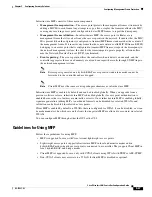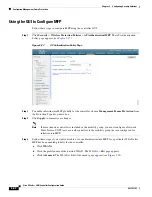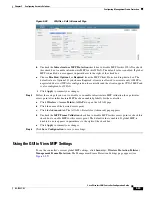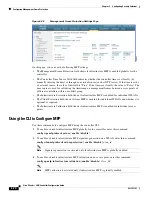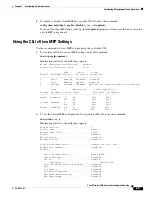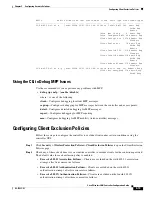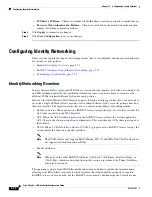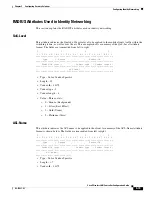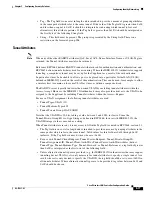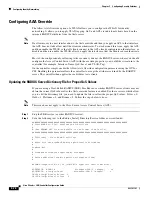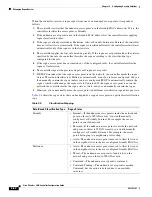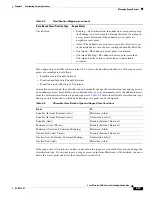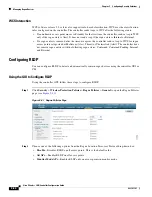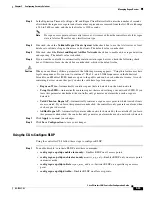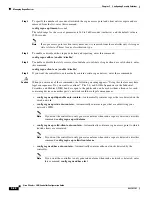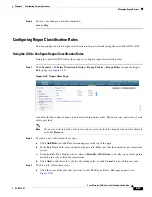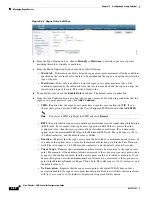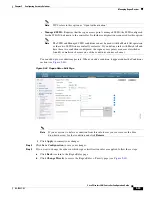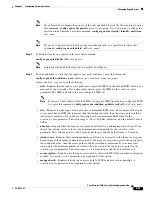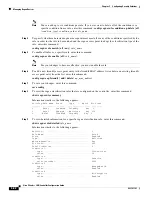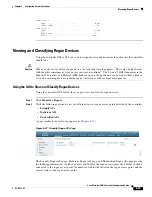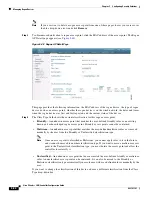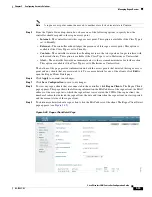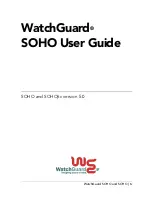
5-80
Cisco Wireless LAN Controller Configuration Guide
OL-17037-01
Chapter 5 Configuring Security Solutions
Managing Rogue Devices
Figure 5-40 WLANs > Edit (Advanced) Page
Step 4
Check the
Allow AAA Override
check box to enable AAA override or uncheck it to disable this feature.
The default value is disabled.
Step 5
Click
Apply
to commit your changes.
Step 6
Click
Save Configuration
to save your changes.
Using the CLI to Configure AAA Override
Use this command to enable or disable AAA override using the controller CLI:
config wlan aaa-override
{
enable
|
disable
}
wlan_id
For
wlan_id
, enter an ID from 1 to 16.
Managing Rogue Devices
This section describes security solutions for rogue devices. A rogue device is an unknown access point
or client that is detected by managed access points in your network as not belonging to your system.
Challenges
Rogue access points can disrupt wireless LAN operations by hijacking legitimate clients and using
plain-text or other denial-of-service or man-in-the-middle attacks. That is, a hacker can use a rogue
access point to capture sensitive information, such as usernames and passwords. The hacker can then
transmit a series of clear-to-send (CTS) frames. This action mimics an access point informing a
particular client to transmit and instructing all others to wait, which results in legitimate clients being
unable to access network resources. Therefore, wireless LAN service providers have a strong interest in
banning rogue access points from the air space.
Because rogue access points are inexpensive and readily available, employees sometimes plug
unauthorized rogue access points into existing LANs and build ad-hoc wireless networks without IT
department knowledge or consent. These rogue access points can be a serious breach of network security
as they can be plugged into a network port behind the corporate firewall. Because employees generally
do not enable any security settings on the rogue access point, it is easy for unauthorized users to use the


